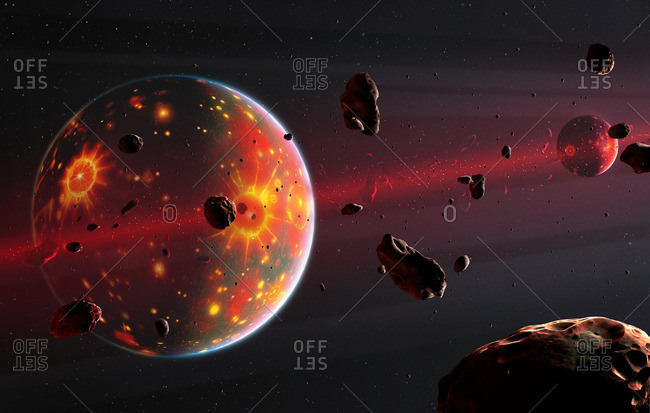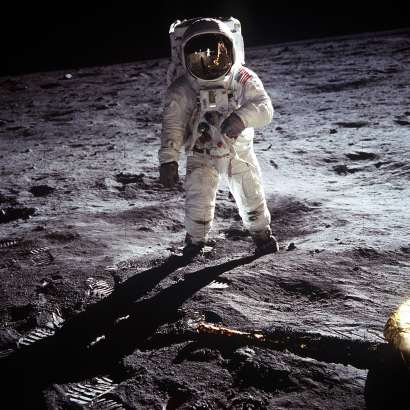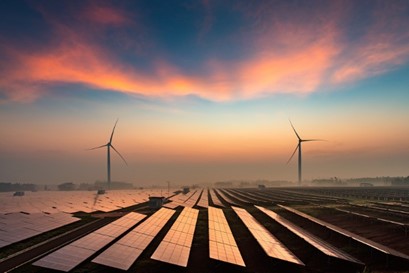
By Daniel Greenfield – March 04, 2023
We live in a strange world in which the weather is a subject of furious political debate. People have been arguing about the weather ever since the first rainstorm caught the first man without the umbrella that he did not yet know how to make, but they didn’t hold political debates over it.
For the last fifty years, the anti-weather side has been insisting that the world is headed toward a Frostean apocalypse of ice or fire. The calm biblical assertion that “Seedtime and harvest, and cold and heat, and summer and winter, and day and night shall not cease” was replaced by the terrifying certainty that the planet would soon turn into Mars or Venus; either too hot or too cold.
The end of weather was here. Instead of stable rhythms and cycles that might last for months or centuries, there was a runaway weather apocalypse that would culminate in unlivable conditions.
The doomsday predictions roll out daily without any regard to scientific or experiential reality. The more the predictions fail to match up, the more urgently Warmists insist on immediate action. The harder it snows, the more articles appear warning that snow may soon be a thing of the past.
Never mind the weather; the end of weather is almost here.
There is a fearful logic to the Warmist creed. Of all the planets, minor planets, moons and assorted rocks drifting through our solar system, only one is inhabitable by man. It is very easy to assume that, but for the grace of random chance, the Earth might be just as uninhabitable as Mars or Venus and to worry that one day it will be.
Mars and Venus inspired more than a series of bestselling books about gender relations. They also convinced the Warmists that Mars and Venus are what the Earth would become.
“Venus is too hot. Mars is too cold. But the Earth is just right a heaven for humans. After all, we evolved here. But our congenial climate may be unstable. We are perturbing our poor planet in serious and contradictory ways. Is there any danger of driving the environment of the Earth toward the planetary Hell of Venus or the global ice age of Mars? The simple answer is that nobody knows,” Sagan wrote in Cosmos.
The insistence that Mars and Venus were variations of Earth, rather than entirely different planets, was a false assumption that predated Sagan. This geocentric fallacy insisted that Mars and Venus were teaching us about our world, rather than about those worlds. Their unlivable atmospheres reinforced the neurotic obsession of doomsayers who treated them as failed Earths.
The original error of climate researchers was their assumption that planets were more fragile than they truly are and could be undone by a nuclear exchange or even by a few coal plants. Carl Sagan, who had done much to popularize unscientific paranoia about nuclear winter and global warming, warned that the Gulf War’s oil fires would lead to a miniature nuclear winter.
They did not.
The mingling of philosophical paranoia over a godless universe and political pacifism disguised as science shaped not only Sagan’s musings, but the entire ideology of weather apocalypses which derived from the conviction that ungoverned man was bound to destroy his environment.
“The surface environment of Venus is a warning: something disastrous can happen to a planet rather like our own,” Sagan wrote.
Sagan, who had predicted that Venus was a hot and dry desert due to a runaway Greenhouse Effect, did not have a very good track record on that planet… or on this one.
Integral to the doomsday model was the belief that Mars and Venus were planets that had once been very much like our own. Sagan, who had spent so much time decrying the primitivism of the medieval mindset, had adopted its geocentric assumption that Earth was the baseline and that if Mars and Venus differed from earth, then they were failed earths.
It was not the first time that distorted geocentric perceptions of Mars and Venus would influence Earth.

In the 19th century, Percival Lowell, a popularizer of often bad science and an earlier version of Sagan complete with anti-clerical and pacifist views, became obsessed with the idea that Mars was an inhabited world whose native race was facing extinction because the planet was losing its water. After the Martian canals had been completely discredited, Lowell’s obsessions were dismissed as the error of a lone individual; but that was no truer of Lowell than it was of Sagan.
Socialist science fiction had become a booming field in the late 19th century. Edward Bellamy’s Looking Backward had envisioned time travel to a Socialist American utopia in the year 2000. It was a bad book, but a popular bestseller because it used the frame of pseudoscience to depict Socialism as both a practical model and inevitable. Likewise, Lowell’s Mars allowed Socialist theorists to depict the Martian Socialist utopia that Earth could become.
Novels such as “Politics and Life in Mars”, “Unveiling a Parallel”, “To Mars via the Moon”, “A Prophetic Romance” and “Red Star” envisioned culturally superior Martians demonstrating their advanced Socialist societies with income equality, planetary labor unions and pacifism to the human race.
In the Russian “Red Star”, the Lowellian canals are a Communist triumph over inhospitable nature anticipating the USSR and Communist China’s disastrous dam projects. The German writer of “Two Planets” envisioned the advanced Martians invading Earth to impose their superior Socialist society on human beings.
The Martians, like Global Warming, were a tool of radical social change.
In “A Message from Mars”, a turn of the century novel, play and film, a Martian from an advanced society visits the most selfish man on earth to convert him to “Otherdom” teaching him to share what he has with the less fortunate. In “Unveiling a Parallel”, a reactionary man visits Mars to discover how well a progressive society can work.
In the Martian Socialist utopias, the aliens lecture human beings on our selfishness, urging us to cast aside nations, religions, private property and monogamy and build our own Socialist utopia.
An inhabited Mars became a fictional conceit for envisioning an ideal society. Global Warming serves the same purpose, providing a fictional framework that can be used to reconstruct human society along more progressive lines. The only difference is that Warmists have gotten further along in imposing their delusion and their plans on the world than the Lowellians ever did.
It does not matter to its proponents, inside or outside the scientific community, whether the planet is warming or cooling, any more than the existence of Martian canals was pivotal to the Socialist Martian utopias. The bad science is only a means of advancing bad politics.
The Martian canals, like Global Warming, provided a perspective shift to enable us to see our society as changeable.
Or as Lowell wrote, “The fact gives us but a flat image. It is our reflexions upon it that make it a solid truth.” Global Warming is another of those “reflexions” that led Lowell to see a dying ancient Martian civilization in the sky contrasted with a modern dystopian Earth dying of its industry and its wars.
Lowell’s Mars was dying of “Global Cooling”. Earth is dying of “Global Warming”. The crisis of the Martians forces them to band together to manage the water they have left and abandon selfish preoccupations with capitalism and nationalism. The Warmists warn that unless we embrace global government, the excess water stored in icebergs will flood the world.
Their Martian crisis has become our crisis.
In “To Mars Via the Moon”, the human narrator encounters a Martian Socialist utopia which accepts the inevitable destruction of its planet by practicing birth control.
“As the final period draws nearer, families will become smaller and smaller, and in the last Martian century no children will be born; so the diminishing water supply will suffice for the needs of the dwindling population,” A Martian character explains, forecasting the environmentalist Zero Population Growth movement on our own planet. “Thus the race will gradually die out naturally, and become extinct.”
Humanity, envisioned as the plague by environmentalists, has only one final solution. Extinction.
Though Sagan and the Warmists depict Venus and Mars as failed earths, the threat to Earth that they envision comes from man. Or as Sagan put it, “Intelligent life, able to make major environmental changes.” The dream of finding Martians and Venusians had died. It could no longer be argued that these worlds had been rendered uninhabitable by intelligent activity. But man was still on the hook.
Nuclear winter and Global Warming indicted war and industry, the targets of those old utopias, for making earth uninhabitable. The loudest advocates for Global Warming within the scientific community went on using Venus as a model for a failed Earth.
“The Venus syndrome is the greatest threat to the planet, to humanity’s continuing existence,” James Hansen declared. “If we burn all the coal, there is a good chance we will initiate the runaway greenhouse effect. If we also burn all the tar sands and tar shale, I think it is a dead certainty.”

Science Fiction…
Hansen’s Venus syndrome is a modern echo of the old Martian obsession. Earth will lose its oceans unless it undergoes radical social and political changes. It will become Lowell’s Mars.
Lowell’s Mars and Hansen’s Venusian Earth are both crisis societies with no room for individual concerns. Survival demands the abandonment of selfish desires such as heating your home or driving to work. It mandates a progressive society where the collective good reigns supreme and the leaders hold unlimited power until the ordinary people become progressive enough.
Global Warming is the culmination of the Martian utopias. Either we become Socialist Martians or die on Venus.
There is no more basis for Venus syndrome than there was for the Martian canals. Both depend on wishful thinking and misinterpreting data. The real threat to humanity does not come from the climate, but from the ambitions of other men. That was something that the ancients knew long before they knew anything about the worlds around us or the distant stars.
We do not face a crisis of climate, but a crisis of ideology, not a crisis of rising oceans or temperatures, but rising ambitions and egos. The environmental crisis is a work of ideology, not science, its goals are not planetary salvation, but radical social change.
Our troubles do not come from Mars or Venus, from the oceans or the volcanoes, but from the evil dreams buried in the hearts of other men.
